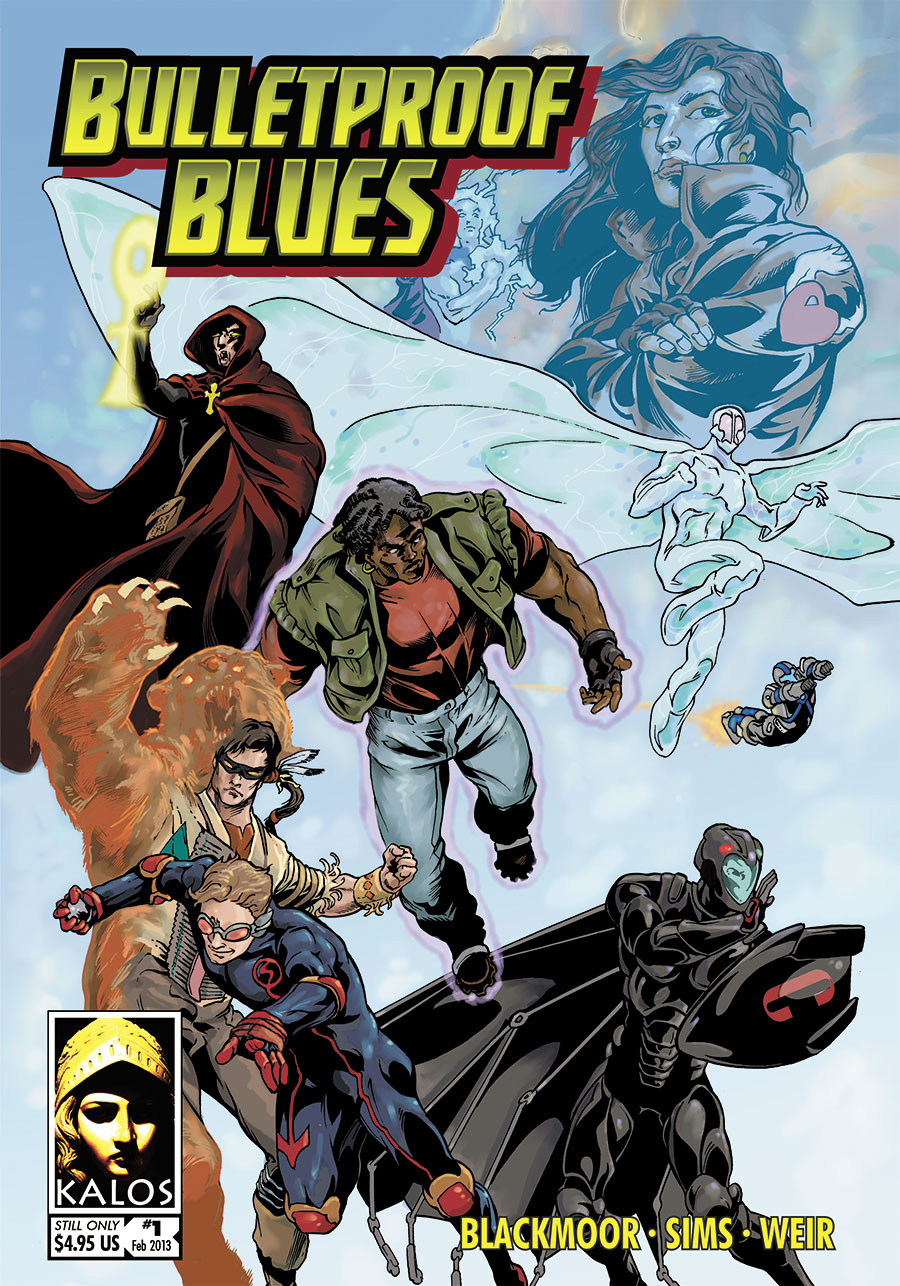As you know, damage in Bulletproof Blues is not dependent on “rolling damage”. A knife usually does the same damage, a pistol usually does the same damage, and so on. The exception to this is if the attacker has “expertise” with the attack and rolls particularly well on their attack roll: that grants an “extreme success”, the most common result of which is +3 damage.
There are three reasons for this. First, rolling and counting handfuls of dice is time consuming. Sure, doing it once is no big deal, but over the course of a game session, with every player doing rolling and counting, rolling and counting, that small amount of time adds up. Since one of the primary goals for Bulletproof Blues is that combat should be fast, we decided to keep the damage for attacks consistent.
Second, given the range of power levels for attacks and defenses in a typical Bulletproof Blues game, rolling for damage obviously wouldn’t work. Even a relatively small variation (rolling a d6, for example) would have game-breaking consequences. A small revolver would have a reasonably good chance at shooting through an armored car, while a bazooka would have a reasonable chance to bounce off of a police officer’s ballistic vest. That works for a more “four color” game, but not for Bulletproof Blues.
Third, and most importantly, is that we don’t want Bulletproof Blues to be the kind of game where you just attack a tough opponent over and over and hope to get lucky. If the player characters are faced with an opponent that shrugs off their usual attacks, we don’t want the players to just fire away at the enemy doggedly until a lucky hit takes them down. That’s terribly dreary. Instead, an enemy that is too tough for their usual attacks should inspire the players to rethink their strategy. Perhaps the player characters need to use teamwork to combine their attacks and overcome the enemy’s armor. If the opponent is too tough for even that, then they should try some other approach. Can the enemy breathe under water? Does the enemy have some psychological weakness than can be exploited? Is the enemy vulnerable to a particular form of energy? In Bulletproof Blues, success should depend on the choices of the characters, not on dogged persistence and waiting for a lucky die roll.
However…
Unpredictability is undeniably part of what makes combat fun, and even a small unexpected bonus can add some zing to a fight. So we got to thinking: how could we add a very small amount of variability to the damage in combat without undermining the basic premises of the game and without slowing down combat?
So here’s what we are currently planning for Bulletproof Blues Second Edition (look for the Kickstarter in February!): an expansion of the benefits of rolling particularly well on a given task. Previously, a task roll either failed, succeeded, or resulted in an extreme success. We would like to add an intermediate step between ordinary success and extreme success, called “remarkable success”.
Remarkable Success
If the player’s roll equals or exceeds the task difficulty, the character succeeds at the task in a completely satisfactory manner: the clue is found, the language is translated, or the lightning bolt hits its target. However, rolling higher than the required task difficulty may grant additional benefits.
If the player does not have expertise in the power or skill, and rolls three or more over the task difficulty, the character achieves a remarkable success. So if a character attempted a challenging task (task difficulty 12), and the player rolled 15 or more, but the player did not have expertise, this would be a remarkable success.
If the player rolls a remarkable success when making a skill roll, perhaps the character gets some small amount of additional information unrelated to the task at hand, or perhaps the GM gives the player a hint about a better avenue of inquiry. If the player rolls a remarkable success in combat, one rank is added to the weapon or power, solely for the purposes of that attack.
Extreme Success
If the player has expertise in the power or skill, and rolls three or more over the task difficulty, the character achieves an extreme success. So if a character attempted a challenging task (task difficulty 12), and the player rolled 15 or more, and the player had expertise, this would be an extreme success.
If the player rolls an extreme success when making a skill roll, perhaps the character has a “eureka!” moment, or perhaps they have found answers to questions they didn’t even know they should ask. If the player rolls an extreme success in combat, the attacker may choose one of three bonus effects, unless the description of the power says otherwise: overwhelming the target, smashing the target, or staggering the target.
What do you think?
One repercussion of adding “remarkable success” is that characters with very high Prowess or Accuracy can often rely on doing an extra point of damage with their attacks. Conversely, characters with very low Prowess or Accuracy will often take an extra point of damage from attacks.




